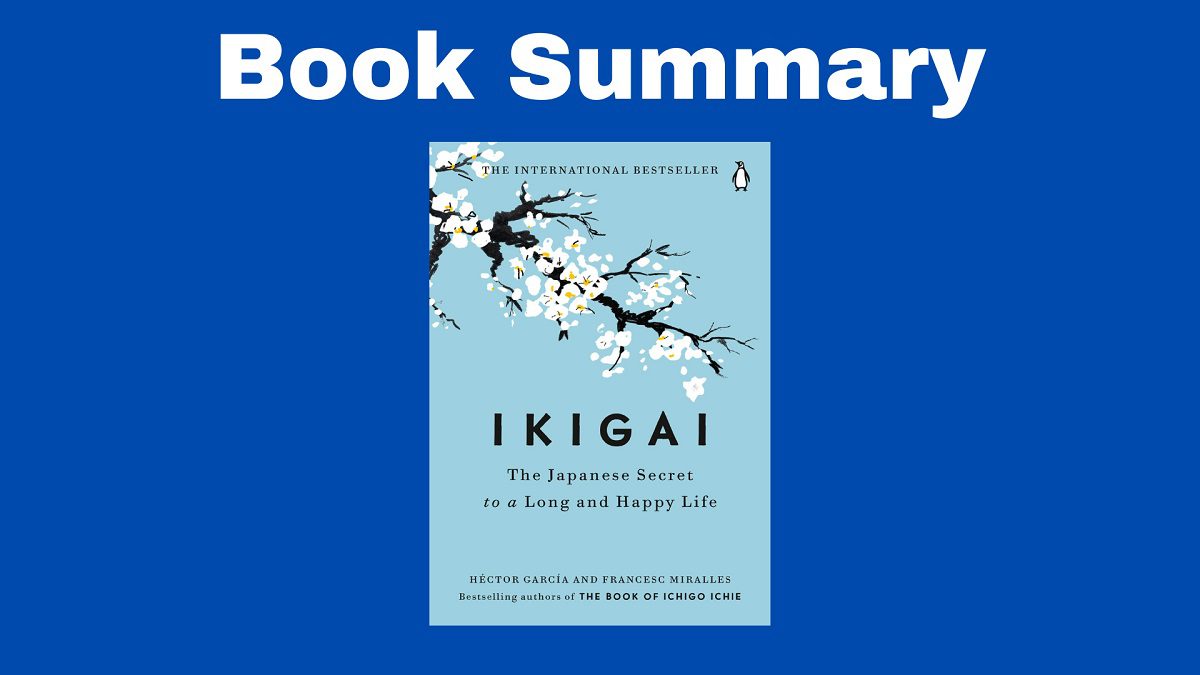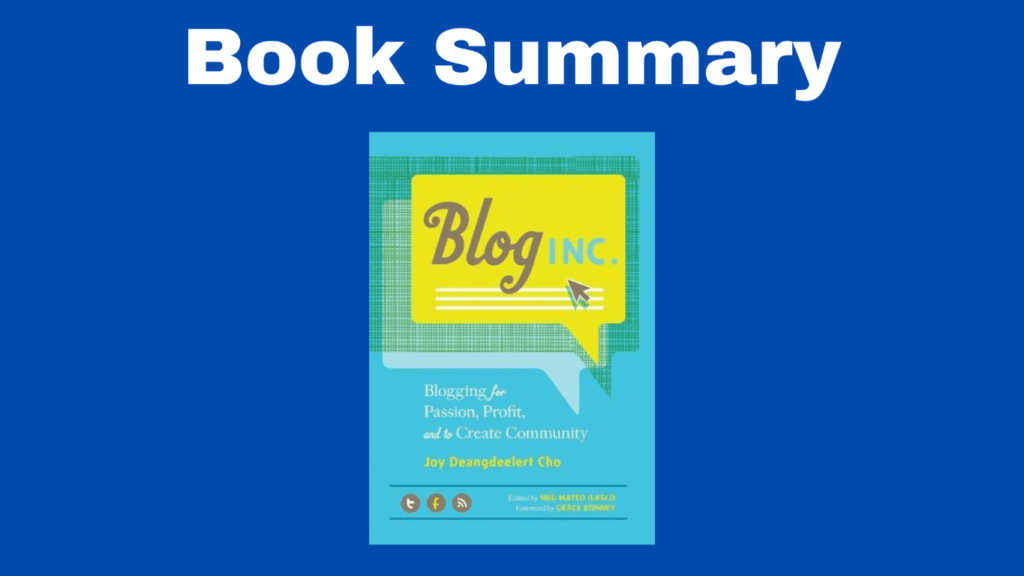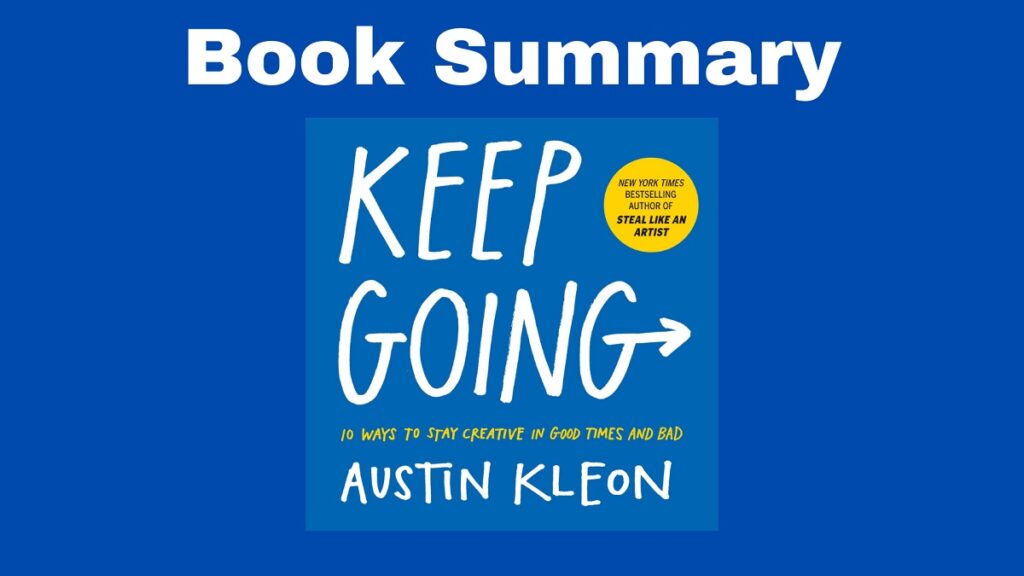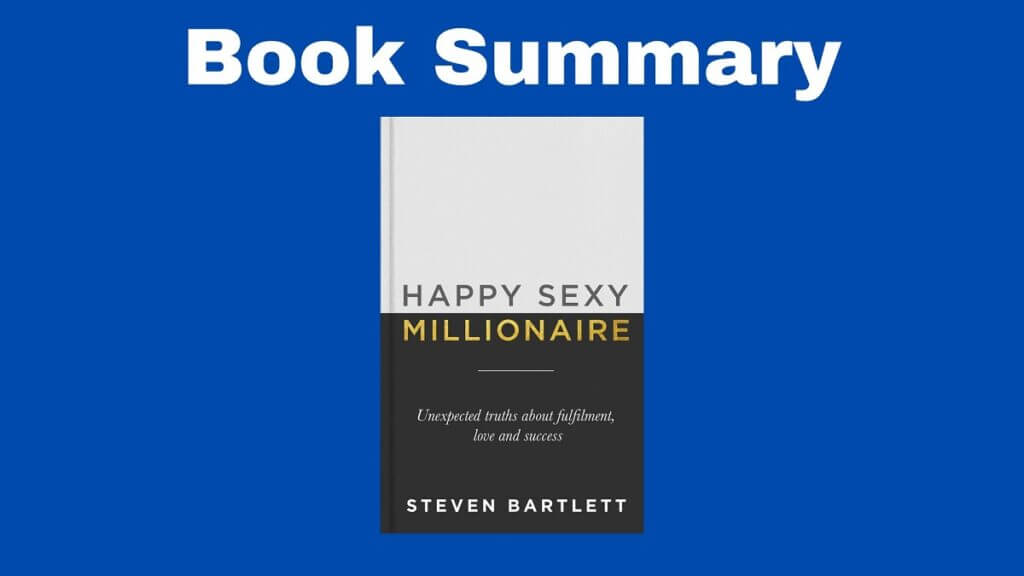The Book in Three Sentences
In this book summary of Ikigai, you’ll learn about the Japanese concept that refers to finding your purpose in life. To have a healthy and fulfilling life, you need an ikigai. The authors interviewed some of the oldest people in Japan and asked them about their routines, diets, and community.
Ikigai Summary
Prologue
Ikigai is a Japanese concept that means “the happiness of always being busy”. Ikigai goes a step beyond Victor Frankl’s logotherapy, a part of psychology that helps people find their purpose. Although a lot of people want to find meaning in what they do, few practicing therapists use logotherapy. Japan is one of the countries with the most number of people over a hundred years old. This is the result of a healthy diet, simple life, a subtropical climate, and having an ikigai.
Chapter 1: Ikigai
According to the Japanese, everyone has an ikigai or a reason for existing. While some have found it, others are still looking for it. Having a defined ikigai brings happiness to your life. This is important in Japan because people don’t retire from work.
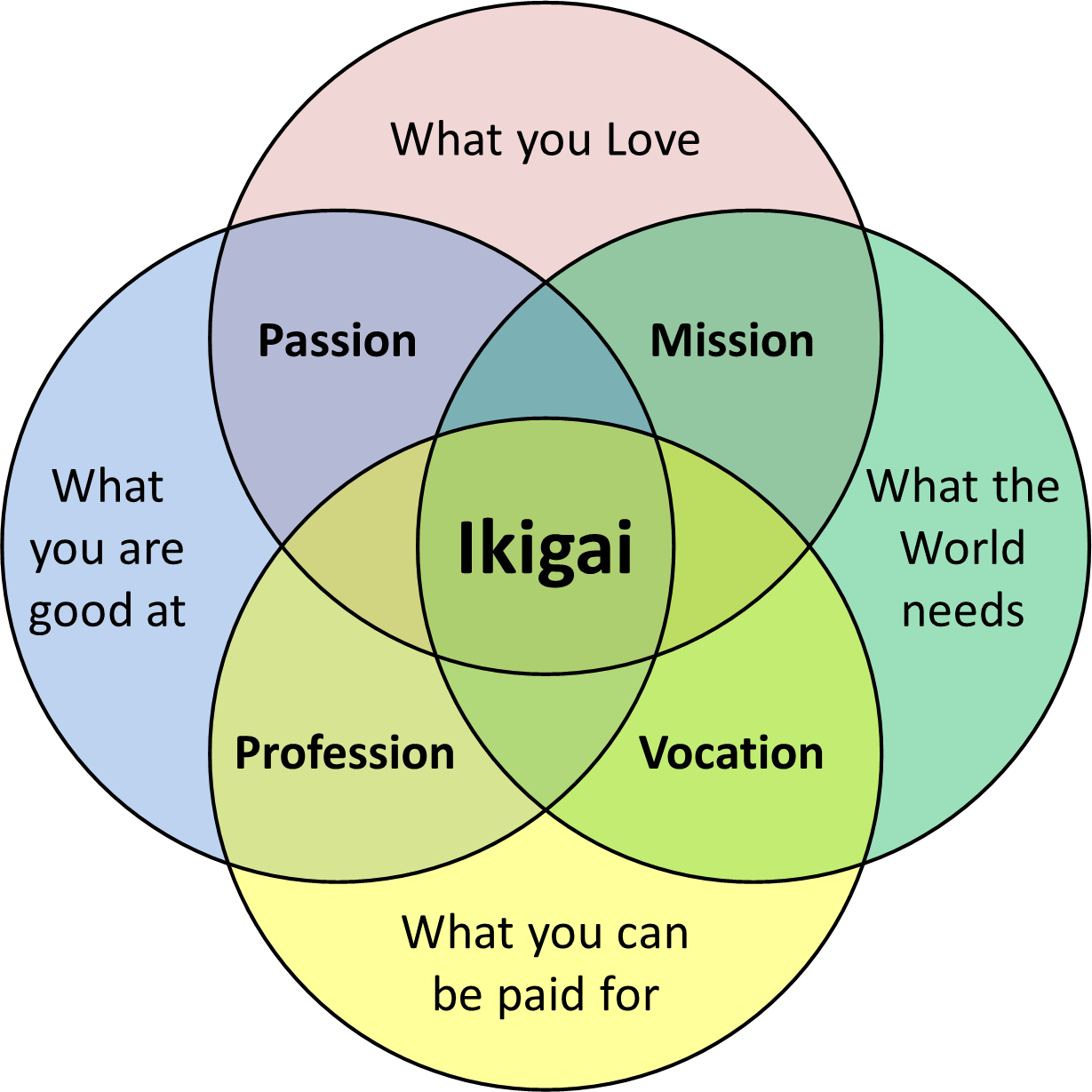
The keys to longevity in the regions where people live the longest are diet, exercise, having an ikigai, and forming strong social ties. In Japan, the secret also involves eating until you’re 80% full since overeating wears down the body with long digestive processes. Having a moai, or an informal group of people with common interests, is also important.
Chapter 2: Antiaging Secrets
When it comes to health, both mind and body are significant. To exercise your mind, you should step out of your comfort zone even if it makes you anxious. “Anti-aging” techniques include learning something new often, playing games, and interacting with others. Nowadays, most health problems stem from stress. Stress can cause depression, irritability, insomnia, anxiety, and high blood pressure. To avoid this, try to be more present by practicing meditation.
Additionally, spending too much time sitting is bad for our health. A sedentary life leads to many diseases, including hypertension and obesity. So avoid sitting by walking twenty minutes a day, use stairs instead of elevators, take part in social activities instead of watching TV, replace junk food with fruit, sleep eight hours a day, and play with pets or children. Also, sleeping eight hours a day protects you against cancer, promotes insulin, slows down Alzheimer’s disease, prevents osteoporosis, and fights heart disease. You should also know that the people who live the longest have a positive attitude and high emotional awareness.
Chapter 3: From Logotherapy to Ikigai
For the uninitiated, Logotherapy is the school of psychology that helps you find a reason to live. Our life’s meaning isn’t created, it’s found.
Shoma Morita, a Zen Buddhist therapist, created a purpose-centered therapy in Japan. His therapy focuses on teaching patients to accept their emotions without controlling them. The idea is that their feelings will change along with their actions.
The basic principles of Morita therapy are:
- Accept your feelings: don’t change or get rid of them.
- Do what you should be doing: focus on the present moment.
- Discover your life’s purpose: while we can’t control our emotions, we can control our actions.
Morita was a zen master of Naikan meditation which focuses on three questions:
- What have I received from person X?
- What have I given to person X?
- What problems have I caused person X?
These reflections increase our responsibility and make us realize we are the cause of our problems.
Chapter 4: Find Flow in Everything You Do
Flow refers to a state of complete immersion without thinking or being distracted. This happens when we lose track of time and we lose ourselves in an activity. In this state, there’s no past or future, there’s only present. When we flow, our mind is “in order”.
The seven conditions to achieve flow are:
- Knowing what to do
- Knowing how to do it
- Knowing how well you’re doing
- Knowing where to go
- Perceiving significant challenges
- Perceiving significant skills
- Being free from distractions
Follow these strategies to achieve flow:
- Strategy 1: Choose a challenging task but one that isn’t too difficult.
- Strategy 2: Have clear, and concrete objectives.
- Strategy 3: Concentrate on a single task. Combining tasks doesn’t save time, if anything it makes us less productive. When we multitask, we switch between activities. But to achieve flow, we must concentrate on one thing at a time. First, you have to be in a distraction-free environment and second, you must have control of what you’re doing.
To increase your chances of achieving a state of flow:
- Don’t look at screens for an hour when you wake up and an hour before going to bed
- Turn off your phone or use the Do Not Disturb feature
- Choose a day of the week to do a technological fasting
- Go to places that don’t have wifi
- Use email once or twice a week
- Use the Pomodoro technique
- Start work sessions with rituals and end with a reward
- Practice mindfulness or meditation, walk or swim
- Work in distraction-free environments
- Divide activities into small tasks and assign each group of tasks a time and a place
- Bundle routine tasks
To be happy, you can turn routine tasks (such as doing the laundry or mowing the lawn) into moments of microflow. These are routine activities that help you relax. Furthermore, rituals give us clear rules and objectives which make it easier to reach a state of flow. When engaged in a ritual, the outcome isn’t important, the process is.
Chapter 5: Masters of Longevity
After interviewing some of the oldest people alive, they shared their secrets to living a healthy and happy life. These secrets include:
- Relaxing
- Eating healthy food
- Sleeping for eight hours a day
- Having a sense of humor
- Having a purpose
Japan has the highest life expectancy in the world. The country has a great health system and a sense of community that encourages people to stay active.
Chapter 6: Lessons from Japan’s Centenarians
Ogimi, a small town in Okinawa, is one of the five places where the oldest people live. Its residents eat a lot of organic food and take part in a lot of social activities.
The secrets to longevity according to the interviews carried out in Ogimi are:
- Don’t worry
- Cultivate good habits
- Nurture your friendships every day
- Live an unhurried life
- Be optimistic
Keys to the Ogimi lifestyle:
- Keep a vegetable garden
- Be surrounded by family members or neighbors you care about
- Celebrate often
- Have an ikigai, but don’t take it too seriously
- Be proud of your traditions
- Be passionate about everything you do
- Have a connection with others and help each other
- Be busy
Chapter 7: The Ikigai Diet
Japan has the world’s highest life expectancy, that’s 85 years for men and 87.3 for women. The country also has the highest number of centenarians. On top of that, the province of Okinawa exceeds the average. Okinawa was the most affected area in World War II, but in a few decades, the province became one of the best places in terms of life expectancy. Some believe that this has to do with the fact that there are no trains, so people have to walk or cycle. Most believe it’s due to Okinawa’s “miracle diet”.
Okinawan residents:
- Eat less than ten grams of salt per day
- Consume a variety of foods, especially vegetables
- Have five servings of fruits and vegetables per day
- Eat grains
- Rarely eat sugar
- Have fish three times a week
As part of the Okinawan diet, its residents eat natural antioxidants on a regular basis. These include:
- Tofu
- Miso
- Tuna
- Carrots
- Guya
- Kombu
- Cabbage
- Nori
- Onion
- Soy sprouts
- Hechima
- Soybeans
- Sweet potato
- Peppers
- Sanpin-cha
As a side note, green tea and most of its variants have many medicinal properties. It controls cholesterol, lowers blood sugar levels, improves circulation, protects against the flu, promotes bone health, and protects against UV. While most of the foods recommended in this chapter are not available in the West, you can look for alternatives.
They include:
- Vegetables like broccoli and chard
- Oily fish such as salmon, mackerel, tuna, and sardines
- Fruits such as citrus, strawberries, and apricots
- Berries such as blueberries or goji berries
- Dried fruits
- Grains such as oats and wheat
- Olive oil
- Red wine
Foods to cut from your diet include refined sugar and grains, processed goods, prepared foods, and cow’s milk and all its derivatives.
Chapter 8: Gentle Movements, Longer Life
Gentle exercises, from yoga to tai chi, have great benefits. The main benefits of yoga include bringing humans closer to nature, mental and physical purification, and it brings us closer to the divine. Tai chi was a martial art whose main goal was to defeat an adversary using the least amount of force. Since then, it’s become a source of health accessible to everyone and is no longer thought of as a martial art.
Chapter 9: Resilience and Wabi-Sabi
Anyone with a defined ikigai has to pursue it no matter what. Resilience allows us to focus on the important things, ignoring all negative emotions. Both Buddhism and Stoicism place special attention on controlling pleasure, emotion, and desire. The Stoics practiced negative visualization, so they often asked themselves “What’s the worst that can happen?” Another principle of Stoicism involves identifying what we can control and what we can’t. For the Stoics, focusing on things outside of our control is meaningless. Both Buddhism and stoicism encouraged people to be in the present.
Wabi-sabi is a Japanese concept that pays attention to the beauty of flawed and incomplete things because that’s how the natural world is. A similar concept is that of ichi-go ichi-e which tells us that once a moment is gone, it’ll never come again.
Certain things become more powerful the more we harm them. Nassim Nicholas Taleb calls this concept antifragility.
To become antifragile:
- Step 1: Create redundancies: to do this, have a second salary in case you lose your main job or have friends in case your marriage fails.
- Step 2: Be conservative in certain areas and take risks in others: when possible, take small risks that lead to big rewards.
- Step 3: Get rid of the things that make you fragile: remove the habits that make you vulnerable. Examples include snacking between meals, eating sweets, being in debt, spending time with toxic people, or doing things you don’t like.
Epilogue
To conclude, we all want to have a connection with what’s meaningful because it makes our life fulfilling. In other words, don’t let distractions take over your life. Instead, let your intuition and curiosity take you to your ikigai.
To sum up, here are the ten rules of ikigai:
- Stay active
- Take it slow
- Don’t fill your stomach
- Surround yourself with good friends
- Get in shape
- Smile
- Reconnect with nature
- Give thanks
- Live in the moment
- Follow your ikigai
Further Reading
If you liked this summary of Ikigai, you should also read:

